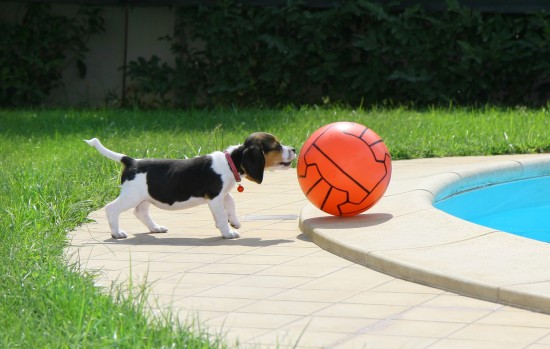
Puppy mills are breeding institutions for dogs. The health of the animals is usually poor due to sparse or nonexistent veterinary care. The food is low-quality in order to cut costs. Virtually no attention is paid to preventing breed-specific disorders. And the pups are kept in pens that are overcrowded and dirty.
This setting tend to produce canines that are physically and psychologically damaged. By the time they are sold, the dogs often suffer from one or more health problems, and a host of behavioral issues.
Adopting a puppy that has spent part of its life in a mill is a major decision. Caring for such an animal requires patience and time, much of it devoted to overcoming the psychological trauma it endured at the mill. With this in mind, we'll cover four key factors to consider below. The following will shed light on some of the challenges to expect.
1 - The Need For Space
When you bring your puppy home for the first time, he may behave fearfully. He might hide behind furniture, and even urinate indoors. Realize that his life at the mill was one of abuse and stress. Fear is an expected outcome. Overcoming this fear requires time.
Set up an area in your home that is designated as your pet's space. A small room is ideal. Put a crate inside along with a bed, toys, and bowls for food and water. Place newspapers in a corner of the room where your puppy can urinate and defecate. Having an area to which he can retreat will help him become increasingly comfortable in his new environment.
2 - The Need For Loving Attention
While your pup needs space, he also needs your attention. At the mill, the main type of attention he received was abuse. Thus, he may need time to fully trust another person.
Consider moving his crate into your bedroom so he can sleep near you during the evenings. This not only dispels any feelings of isolation, but will also help him to establish a connection with you.
3 - Positioning The Leash As A Positive Tool
Helping your pet become accustomed to a leash may be difficult. He'll likely be fearful of any attempt to place the leash on his collar. Use treats to reward his compliance.
Initially, attach the leash to your puppy's collar, and allow him to drag it while he roams through your house. He'll become familiar with the sensation in a nonthreatening manner. Once he appears comfortable with having the leash attached, pick up the other end, and walk with him. This will help him get used to the feeling of having you hold the leash. Provide treats to help your pup form a positive connection with walking on his leash.
The next step is to hold the leash, but remain standing in one place. This will train your puppy to wait for you. He may struggle at first, but be patient. When he stops struggling, give him a treat and praise him. Continue doing this exercise until he remains calm from the beginning.
4 - Venturing Outside
The bustle of activity outdoors can be intimidating to a mill puppy. The sights, sounds, and scents can prove overwhelming. Introduce your pet to the outdoors gradually. Rather than taking him for a walk near a high-traffic street, take him to the park during the week when few people will be in attendance. With his leash securely attached, let him explore the environment and gain a level of comfort being outside.
Once your puppy is comfortable outside, take him for a walk in a quiet neighborhood. If you have a friend with a dog, ask him or her to accompany you. The presence of another canine may provide extra comfort to your pet since mill puppies tend to trust other animals more quickly than they trust people.
Caring for a mill puppy is a challenging, though deeply rewarding, experience. With time, your dog will develop an unbreakable bond with you that will make the effort worthwhile.
 5 Signs Your Dog Might Be Suffering From Seasonal Allergies
5 Signs Your Dog
5 Signs Your Dog Might Be Suffering From Seasonal Allergies
5 Signs Your Dog
 Outdoor Hazards That Can Be A Threat To Your Puppy
Outdoor Hazards T
Outdoor Hazards That Can Be A Threat To Your Puppy
Outdoor Hazards T
 A Brief Look At Delightful Indian Runner Ducks
A Brief Look At D
A Brief Look At Delightful Indian Runner Ducks
A Brief Look At D
 Perfect Services at Veterinarian Hospital in South Arlington
Perfect Services at Veterinarian Hospital in South Arlingt
Perfect Services at Veterinarian Hospital in South Arlington
Perfect Services at Veterinarian Hospital in South Arlingt
 4 Mistakes You Should NEVER Do When Trying To Stop Dog Barking
4 Mistakes You Should NEVER Do When Trying To Stop Dog Bar
4 Mistakes You Should NEVER Do When Trying To Stop Dog Barking
4 Mistakes You Should NEVER Do When Trying To Stop Dog Bar
Copyright © 2005-2016 Pet Information All Rights Reserved
Contact us: www162date@outlook.com